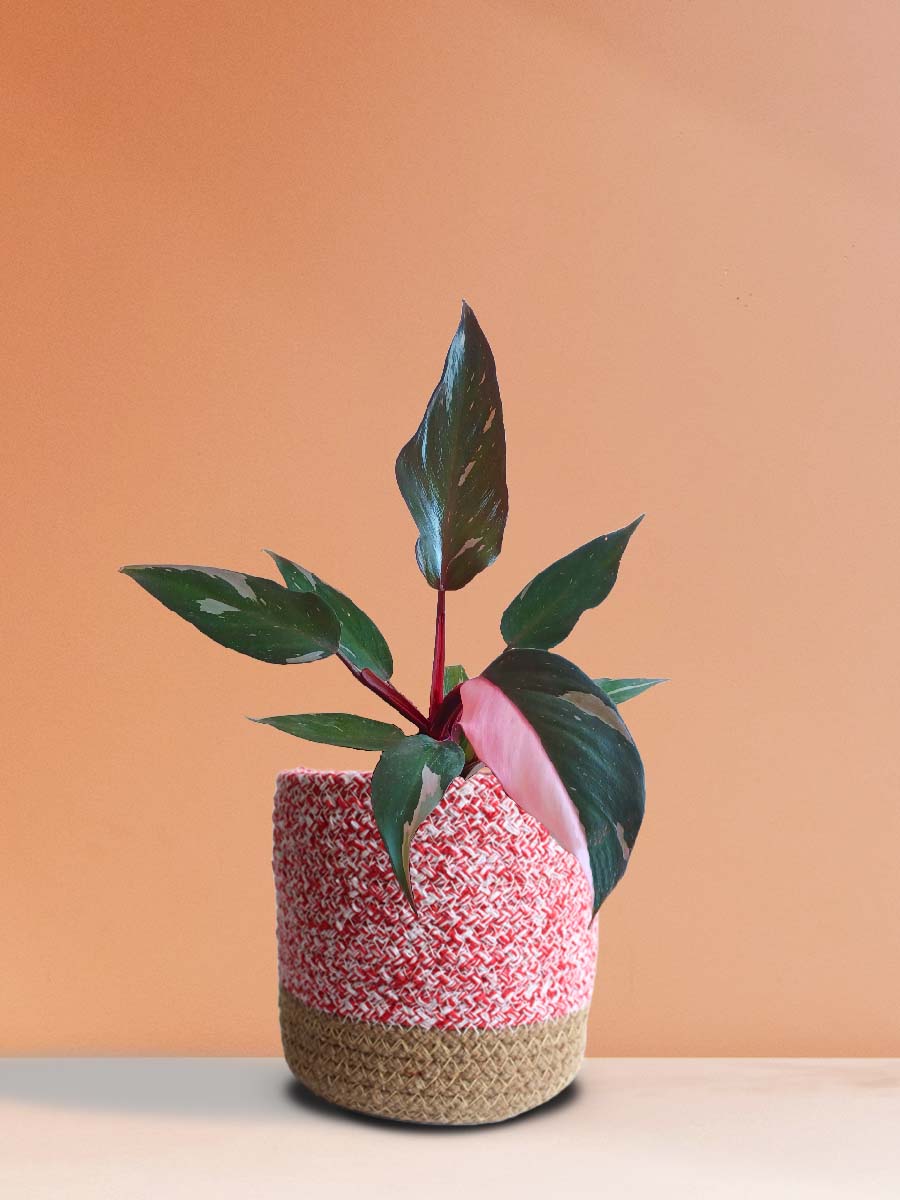
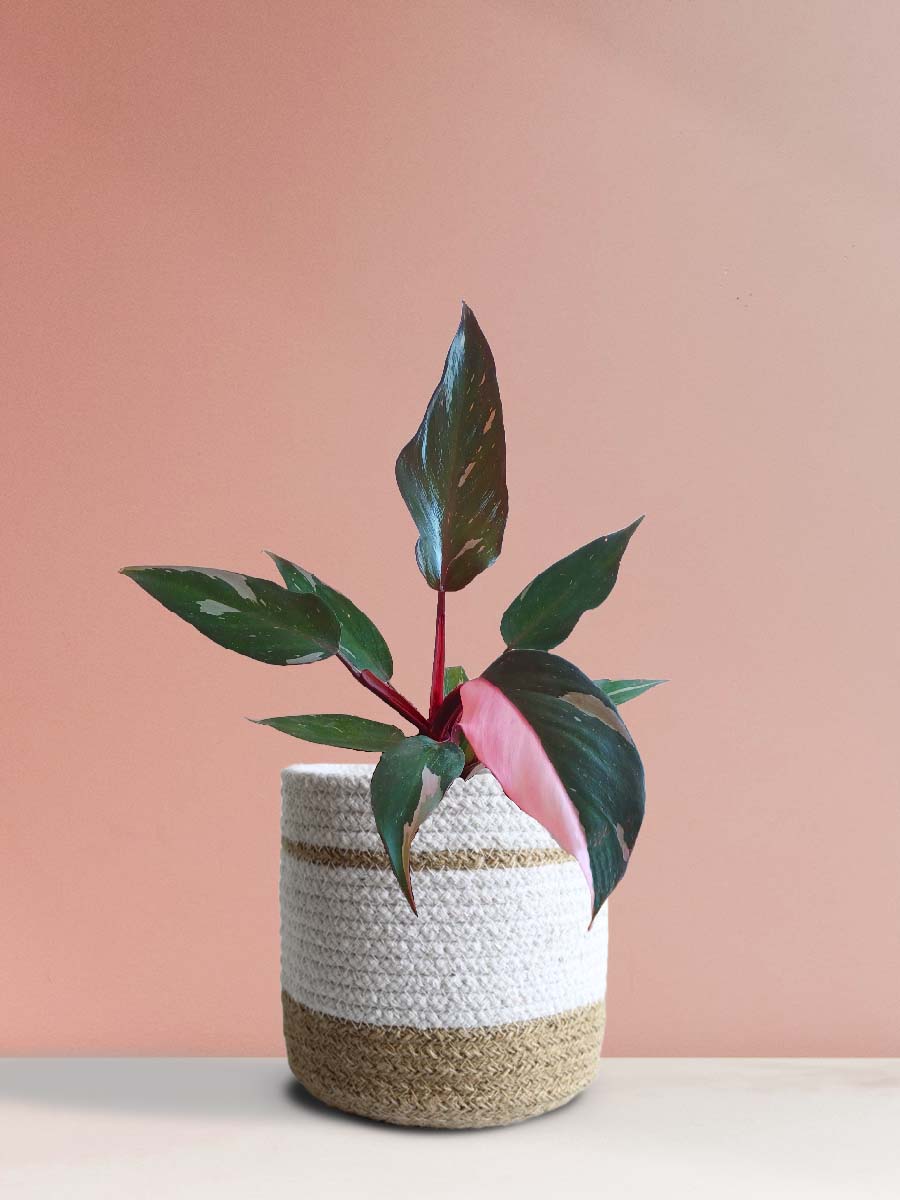
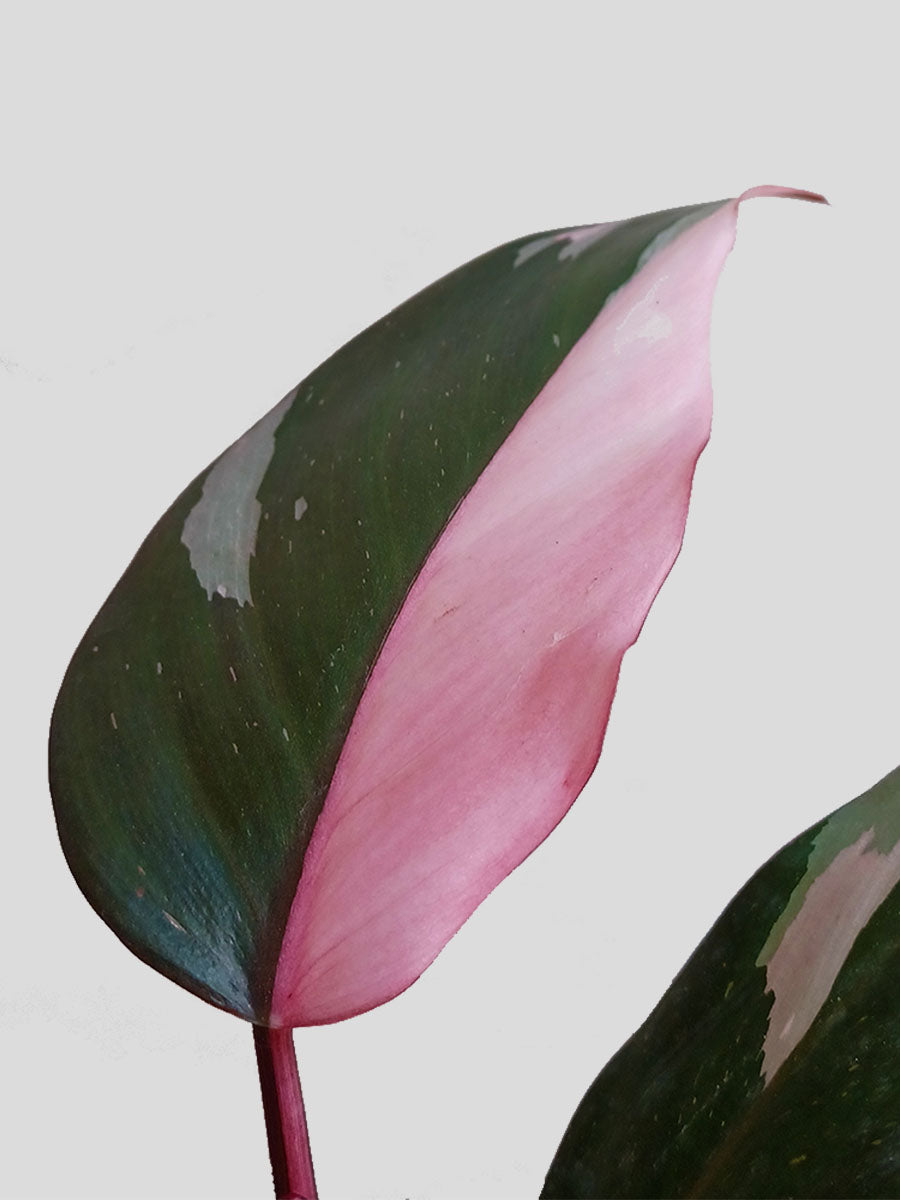
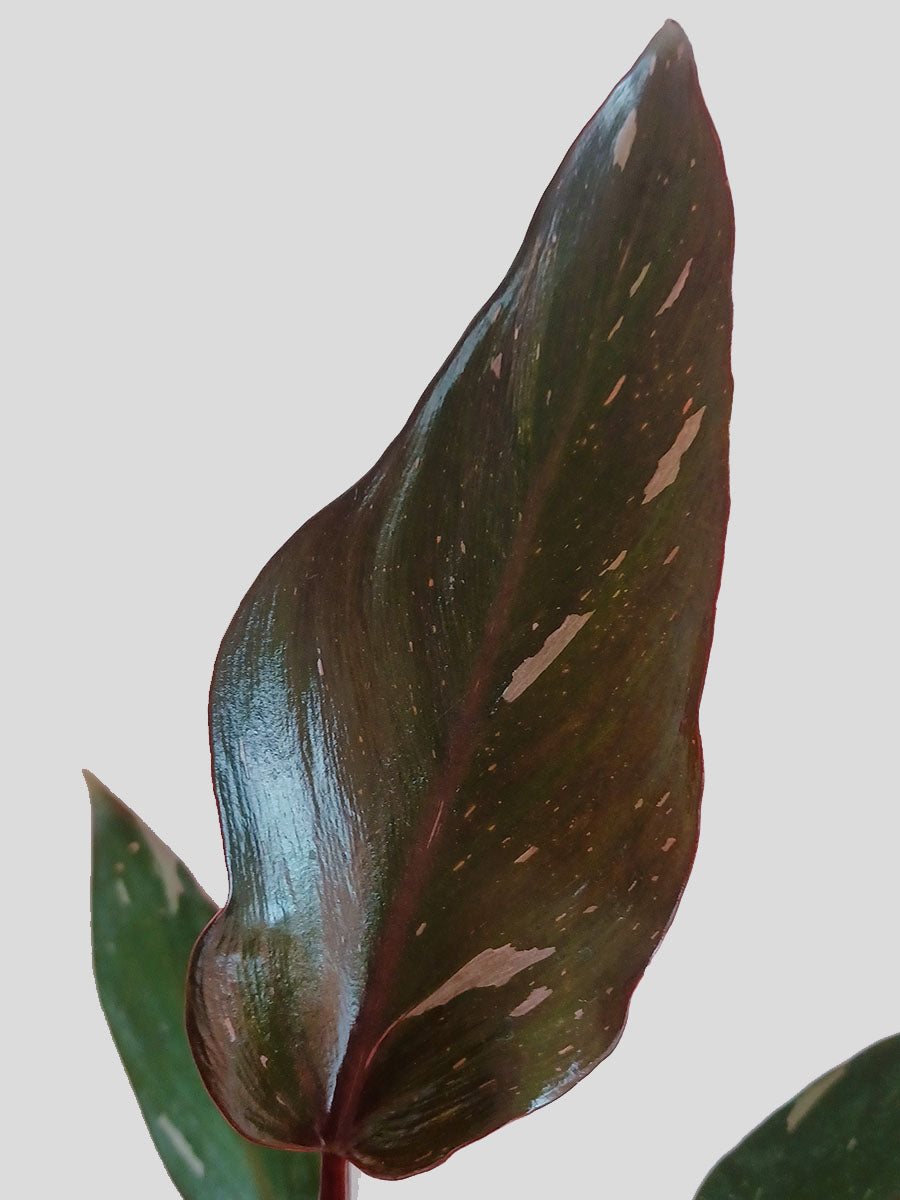
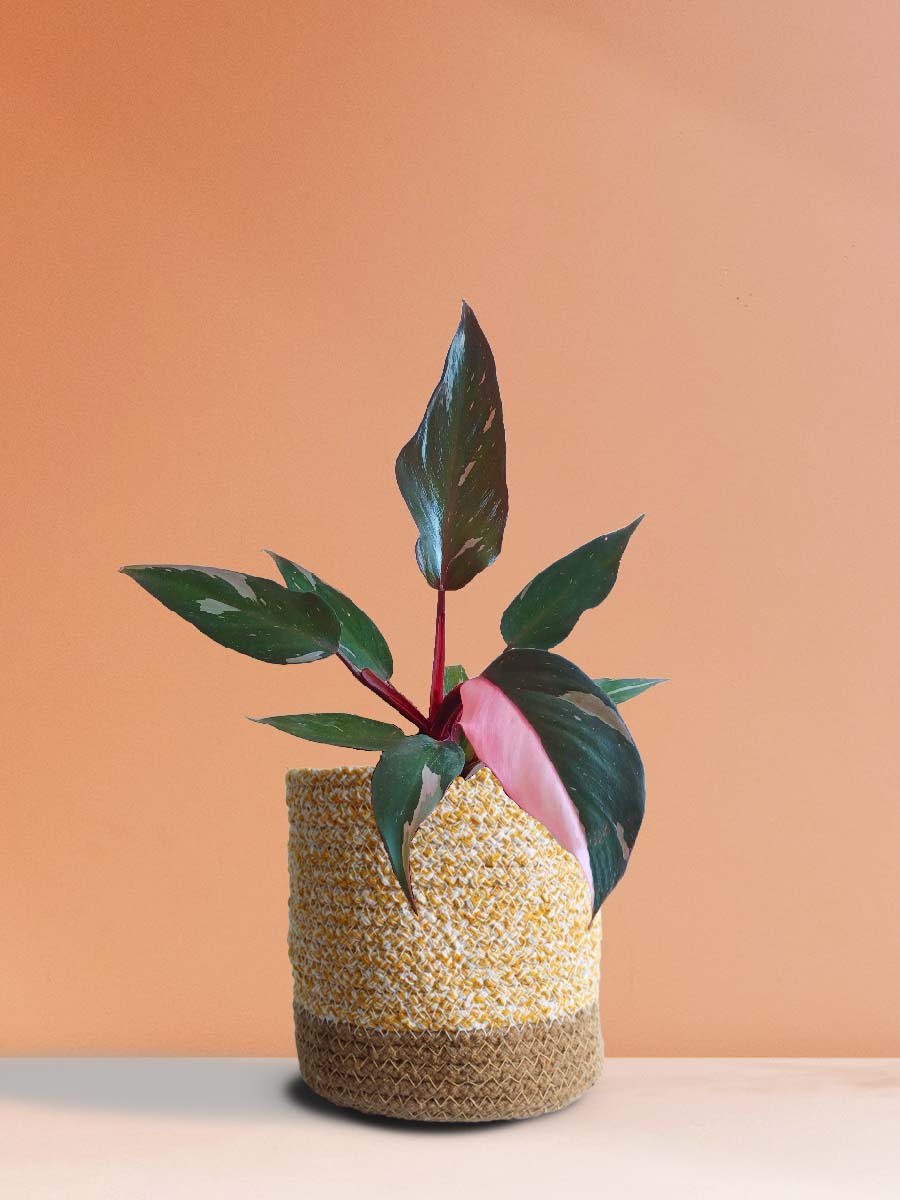
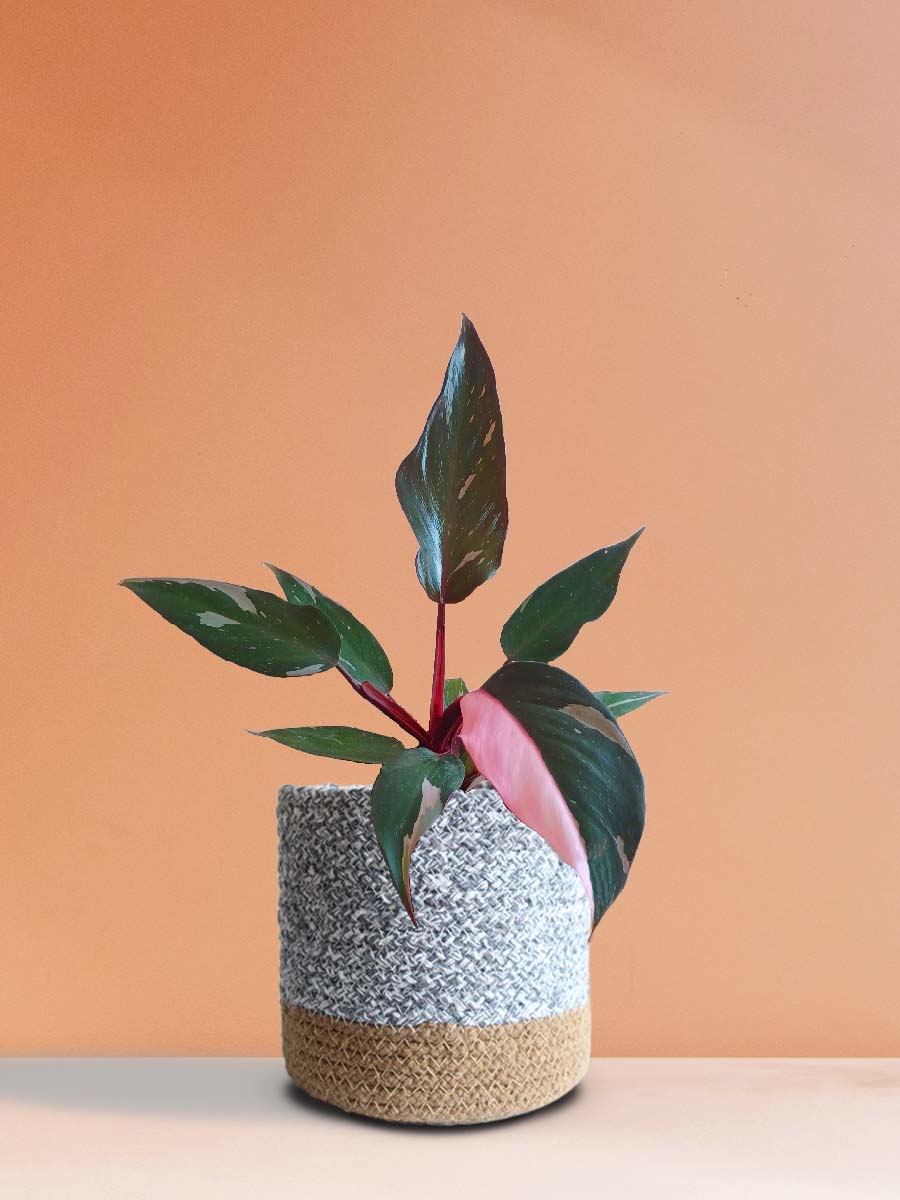
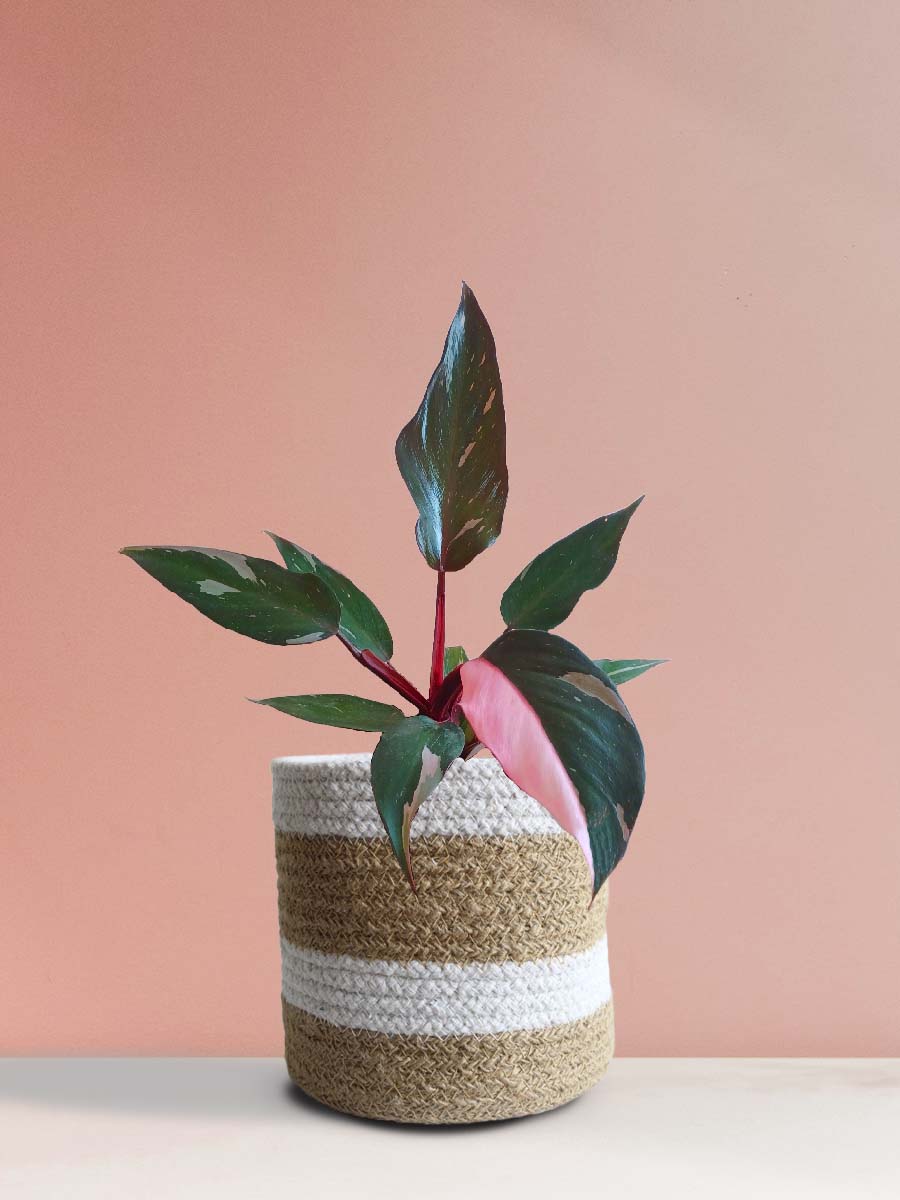
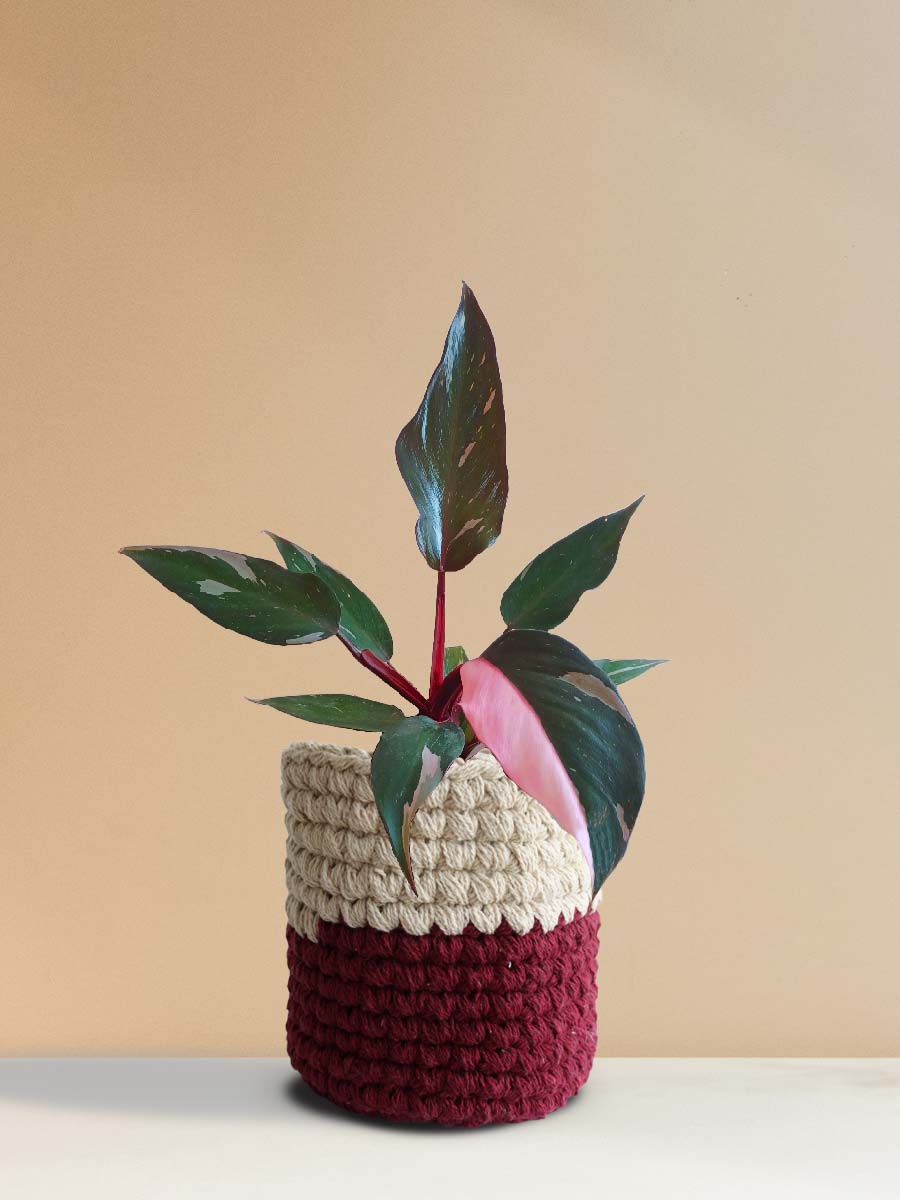
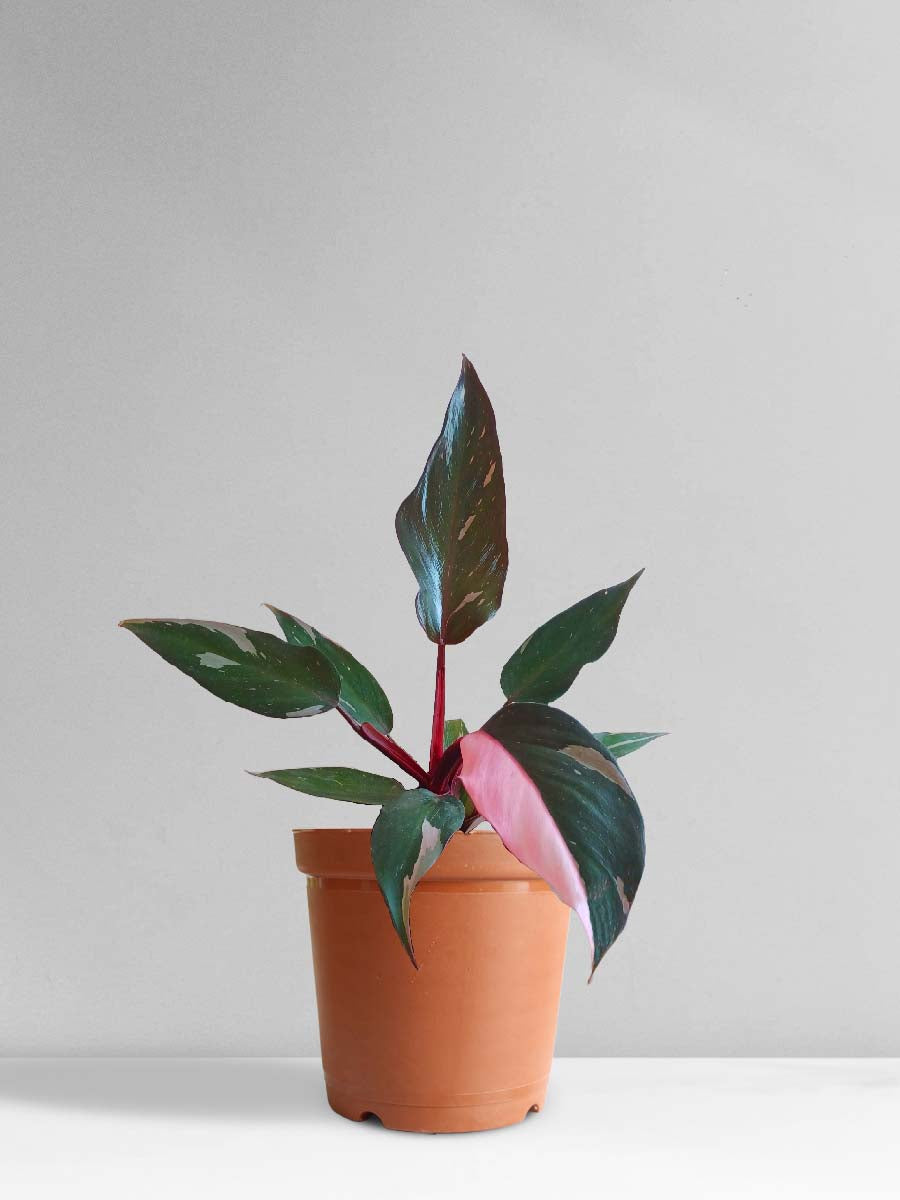
Size Guide
25,000+ Smiles Delivered
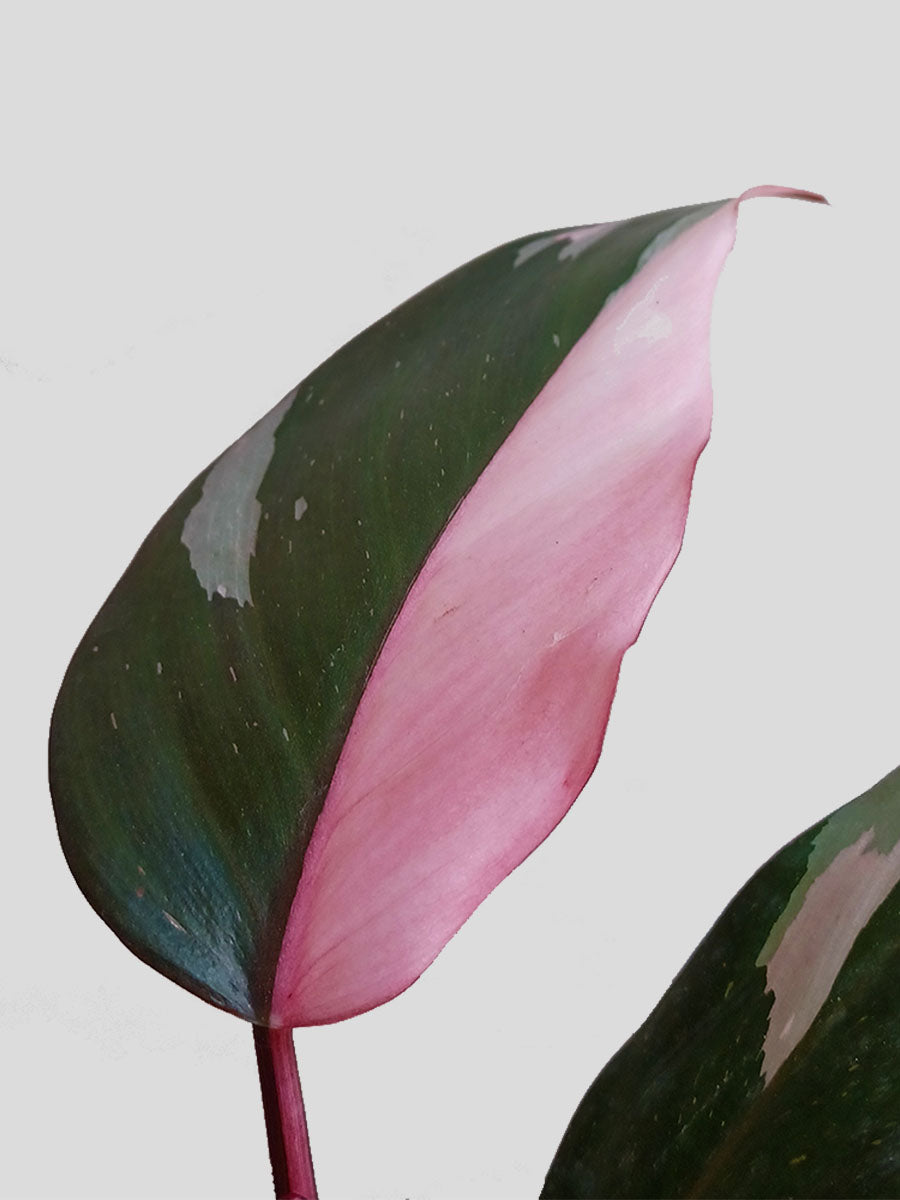
About Philodendron Pink Princess Plant (Medium)
Also Known As
Also Known As
PPP Plant, Red Emerald Philodendron, Philodendron Erubescens, Burgundy Philodendron, Red Leaf Philodendron, Queen of Pink Houseplants, Blushing Philodendron
Keep In Mind
Keep In Mind
The Trending 25
Shop our Bestsellers - The plants that everyone is buying
-
Indoor Plants Combo for Home Decor in Eco Pots (Small)
Regular price ₹ 1,199Regular priceUnit price per₹ 2,199Sale price ₹ 1,199Sale -

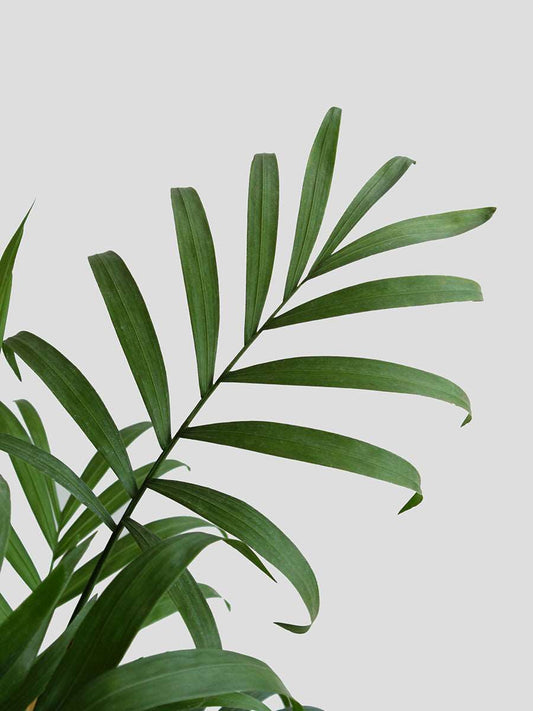 25% Off
25% OffBamboo Palm (Large)
Regular price From ₹ 899Regular priceUnit price per₹ 1,199Sale price From ₹ 899Sale -
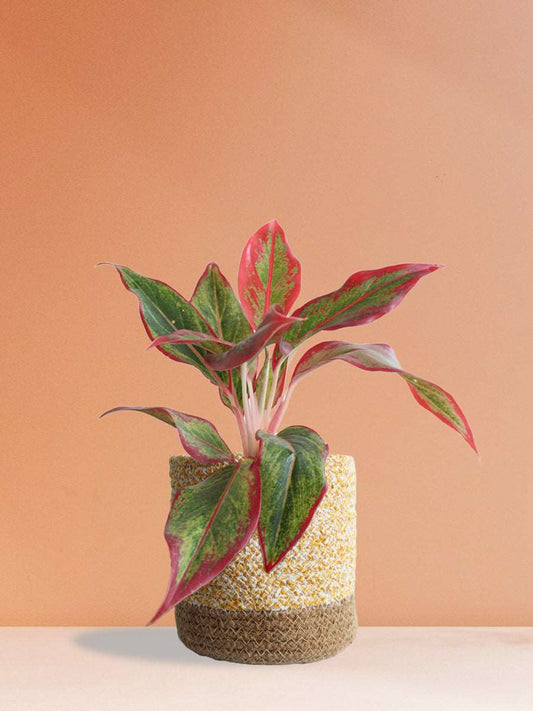
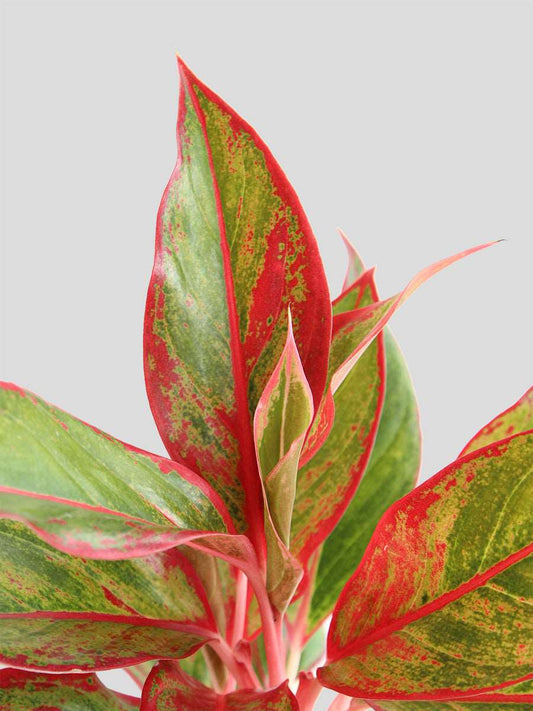 37% Off
37% OffAglaonema Red Lipstick (Medium)
Regular price From ₹ 499Regular priceUnit price per₹ 799Sale price From ₹ 499Sale -
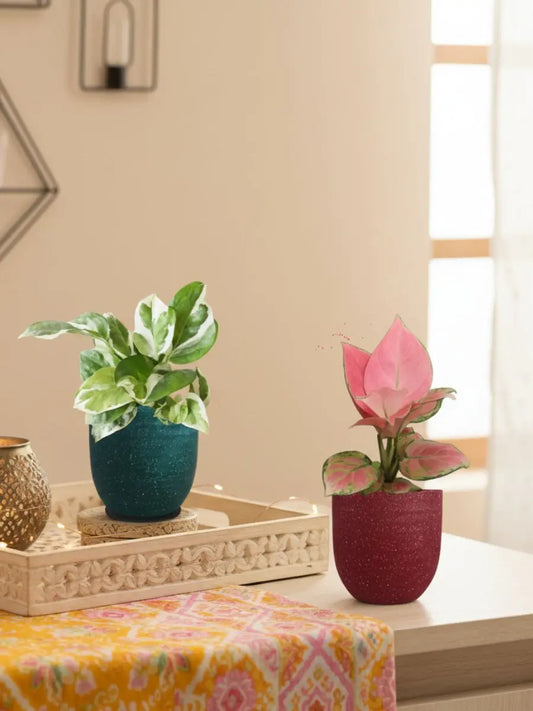
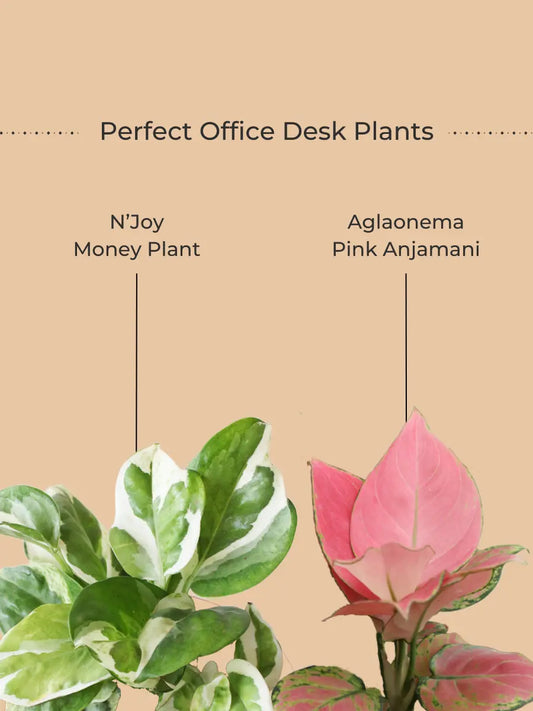 25% Off
25% OffOffice Desk Plants Combo (Small)
Regular price ₹ 936Regular priceUnit price per₹ 1,249Sale price ₹ 936Sale
Buy Philodendron Pink Princess Plant (Medium) Online
Are you a plant person who likes colorful plants? Do you like decorating your home with live plants? Then Philodendron Pink Princess or PPP Plant is a must-have plant for you. Read below to understand more about this houseplant which has won hearts all over the world. PPP Plant is a beginner-friendly plant, so you can get this plant even if you are not experienced with houseplants.
Pink Princess Philodendron, a plant in the Araceae family, is commonly known as Philodendron erubescens 'Pink Princess' in its botanical name.
Philodendron erubescens is a climbing vine that was first discovered in 1854. K. Koch & A. Augustin, the first to publish in 1854, are credited with laying the groundwork for modern botany. Philodendron erubescens has glossy, dark green leaves on top that often turn a coppery color on the underside. The leaf blades range in length from 20 to 40 cm (9 to 18 inches). A layer that looks like a sheath is called a cataphyll. It lets new leaves grow.
Each leaf has a support structure called a petiole, which is commonly mistakenly referred to as a "stem" & is typically the same length as the leaf blades. The stem of Philodendron erubescens is not the support for a single leaf blade, but rather the central axis of the plant's cataphyll. Natural variation & morphogenesis (ontogeny) both contribute to the wide range of morphologies (structural design) found among Philodendron species. However, leaf forms & colors can vary within the species.
All Philodendrons are aroids, which reproduce via an inflorescence, known as a spathe appearing to be a hood & spadix. The spathe is nothing more than a specially modified leaf whose purpose is to protect the spadix. During the period the plant is reproducing, very tiny flowers (both male & female) are found on the spadix at the center of the inflorescence.
Pink Princess Plant Flowering: The spathes of the flowers produced by this gem pale in comparison to the splendor of its leaves. If all of its other conditions are met, it will bloom in the spring & summer.
Follow this link to read more about the most expensive plants ever sold.
Pink Princess Philodendron (Philodendron erubescens) is a widespread species that has naturalized on the Hawaiian Islands & can also be found on the mainland, in parts of Brazil, & in Costa Rica. It can ascend up to 18 meters in its native rainforest, but prefers shady areas & cannot tolerate direct sunlight. In addition to preferring a humid environment, this species needs well-drained soil & consistent watering throughout the warm growing season.
The Pink Princess houseplant is a rare variegated houseplant that has heart-shaped leaves & vibrant pink streaks because of a lack of chlorophyll. A genetic mutation caused the pink crescent shapes to appear on these plants, which were initially discovered in the 1970s. Their appeal has led to a rise in demand for them as decorative houseplants. It is also suitable for pots or hanging baskets due to its ability to create oxygen & glucose, making it a visually appealing plant.
Every plant's size & shape depends on space, light intensity, temperature, & container or support. However, the climbing vine-like PPP plant can generally grow to a large size under ideal conditions. The general size of PPP plant’s different parts are as below:
leaf size: PPP Plant leaves are 9 to 12 inches (30 to 30 cm) long & have a beautiful dark green color with pink variegation.
Vine length: PPP Plant vines can grow to many feet or more with correct support & training, potentially climbing trellises, poles, or other structures.
Overall size: PPP Plants can grow 3 to 5 feet tall & 2 feet horizontally spread in ideal conditions. As they mature, they become bushier with more stems & foliage. Also, regular pruning or shaping of plants can lead to increased growth in length size.
Pink Princess Plant has aesthetic appeal: The PPP Plant adds a touch of beauty & elegance to any indoor space with its glossy, heart-shaped leaves & unique variegation pattern.
PPP Plant is a low maintenance plant: The PPP Plant is relatively easy to grow & care for. It thrives in nutrient-rich, well-drained soil & requires high levels of humidity, moderate temperatures, & moist soil. Repotting & trimming every 1-2 years promotes bushier growth & enhances variegation.
Philodendron Pink Princess is adaptable to different environments: The PPP Plant is adaptable & can be grown in a various locations. It prefers bright, filtered, or indirect light & can tolerate temperatures between 18-32 °C. However, it should be kept away from freezing temperatures & direct sources of heat or cold.
PPP Plant has a fast growth potential: With proper care, the PPP Plant can grow up to 4 feet tall & 18 inches wide. It may require repotting every 1-2 years to accommodate its growth.
Pink Princess Plant has beautiful & unique foliage: The PPP Plant has black foliage with pink variegation, making it a vibrant & eye-catching addition to any home.
PPP Plant is easy to propagate: The plant can be easily propagated through water propagation, soil propagation, or using specialized tools for plant propagation. This allows for easy expansion of your plant collection or sharing with others.
PPP Plant is a pest-resistant houseplant: The PPP Plant is generally resistant to pests. However, if necessary, neem oil or insecticide spray can be used to control pests.
Philodendron Princess Plant is air-purifier & humidifier: PPP have ability to enhances indoor air quality by absorbing harmful substances present in indoor areas. Additionally, it controls humidity through photosynthesis & neutralizes pollutants via soil microorganisms. The process of transpiration in plants also helps with skin moisture, respiratory diseases, & lung health.
PPP Plant is educational & rewarding: Growing & caring for plants can be a fulfilling & educational experience. It allows you to learn about plant propagation, science, proper care techniques, & the importance of providing optimal conditions for plant growth.
PPP Plant has a potential for sharing & gifting: The PPP Plant is a popular & sought-after plant, making it a great option for sharing or gifting to plant enthusiasts. Its rarity & unique appearance make it a special & memorable gift.
PPP Plant has numerous health benefits: The Philodendron Pink Princess Plant (PPP) is a plant with regenerative, anti-inflammatory, and hypo-allergenic properties. It is used in various products for moisturizing, treating skin issues, and as a detoxifier. It also boosts the immune system and reduces stress. It also improves focus and connects individuals to nature while caring the plant needs.
To grow & care for a Philodendron Pink Princess plant, there are certain things to avoid & adopt, such as:
Read more: Detailed Care Guide for Pink Princess Plant
PPP Plants can change color to a dark green or red color when they don't get enough light. As a result, the plant's chlorophyll production rises & it develops new, more photosynthesis-efficient (green color) leaves. Mostly, chlorophyll, the green pigment in plants, is absent from the pink leafy parts of this plant.
But what is the process of the PPP plant’s color change? The process is called “reversion”.
Reversion can occur in one of two ways: The pink variegated leaves can change to burgundy, indicating the presence of chlorophyll pigments, or the plant can develop more green, non-variegated leaves.
Solution to stop reversion in Pink Princess plant: To prevent reversion, remove any excess green or red leaves & provide the plant with a sufficient amount of indirect light. However, stem or leaf cuttings from an entirely reverted plant could be used to create new plants with variegation.
Planting a vining plant like a PPP Plant near a south or west-facing window is ideal. For even more significant growth, put it near a north or east facing window. This plant is hardy & well-suited to interior environments with little light.
Place PPP plants in various locations to enrich your living space. For example:
During the spring & summer, aroid like PPP plants are most suitable for purchase due to their active growth.
Giving a PPP Plant as a gift is a “thoughtful gesture” to show “respect”, “love”, “affection”, “friendship”, “leadership”, & “resilience". The pink & green leaves of the plant represent these feelings & can be used to send a heartfelt message.
You can send it to say "Get well soon," "Happy Birthday," "Happy Anniversary," "Congratulations," "Just Because," & more.
Also Read: A list of unique plants to gift on Valentine's Day
Origin, History & Morphology of Pink Princess Philodendron
Pink Princess Philodendron, a plant in the Araceae family, is commonly known as Philodendron erubescens 'Pink Princess' in its botanical name.
Philodendron erubescens is a climbing vine that was first discovered in 1854. K. Koch & A. Augustin, the first to publish in 1854, are credited with laying the groundwork for modern botany. Philodendron erubescens has glossy, dark green leaves on top that often turn a coppery color on the underside. The leaf blades range in length from 20 to 40 cm (9 to 18 inches). A layer that looks like a sheath is called a cataphyll. It lets new leaves grow.
Each leaf has a support structure called a petiole, which is commonly mistakenly referred to as a "stem" & is typically the same length as the leaf blades. The stem of Philodendron erubescens is not the support for a single leaf blade, but rather the central axis of the plant's cataphyll. Natural variation & morphogenesis (ontogeny) both contribute to the wide range of morphologies (structural design) found among Philodendron species. However, leaf forms & colors can vary within the species.
All Philodendrons are aroids, which reproduce via an inflorescence, known as a spathe appearing to be a hood & spadix. The spathe is nothing more than a specially modified leaf whose purpose is to protect the spadix. During the period the plant is reproducing, very tiny flowers (both male & female) are found on the spadix at the center of the inflorescence.
Pink Princess Plant Flowering: The spathes of the flowers produced by this gem pale in comparison to the splendor of its leaves. If all of its other conditions are met, it will bloom in the spring & summer.
Follow this link to read more about the most expensive plants ever sold.
Cultivation of PPP Plant
Pink Princess Philodendron (Philodendron erubescens) is a widespread species that has naturalized on the Hawaiian Islands & can also be found on the mainland, in parts of Brazil, & in Costa Rica. It can ascend up to 18 meters in its native rainforest, but prefers shady areas & cannot tolerate direct sunlight. In addition to preferring a humid environment, this species needs well-drained soil & consistent watering throughout the warm growing season.
Etymology of Philodendron Pink Princess Plant
The Philodendron, derived from Greek words for love & affection, is often referred to as "tree huggers" due to its wild nature. The Pink Princess, also known as blushing philodendron or pink philodendron, is renowned for its stunning coloration, as its petioles, leaves, & inflorescence all "blush" in sunlight.Fun fact on Pink chemical manipulation of PPP Plant
The Pink Princess houseplant is a rare variegated houseplant that has heart-shaped leaves & vibrant pink streaks because of a lack of chlorophyll. A genetic mutation caused the pink crescent shapes to appear on these plants, which were initially discovered in the 1970s. Their appeal has led to a rise in demand for them as decorative houseplants. It is also suitable for pots or hanging baskets due to its ability to create oxygen & glucose, making it a visually appealing plant.
Pink Princess Plant Growth Facts
Every plant's size & shape depends on space, light intensity, temperature, & container or support. However, the climbing vine-like PPP plant can generally grow to a large size under ideal conditions. The general size of PPP plant’s different parts are as below:
leaf size: PPP Plant leaves are 9 to 12 inches (30 to 30 cm) long & have a beautiful dark green color with pink variegation.
Vine length: PPP Plant vines can grow to many feet or more with correct support & training, potentially climbing trellises, poles, or other structures.
Overall size: PPP Plants can grow 3 to 5 feet tall & 2 feet horizontally spread in ideal conditions. As they mature, they become bushier with more stems & foliage. Also, regular pruning or shaping of plants can lead to increased growth in length size.
Benefits of Philodendron Pink Princess Plant:
Pink Princess Plant has aesthetic appeal: The PPP Plant adds a touch of beauty & elegance to any indoor space with its glossy, heart-shaped leaves & unique variegation pattern.
PPP Plant is a low maintenance plant: The PPP Plant is relatively easy to grow & care for. It thrives in nutrient-rich, well-drained soil & requires high levels of humidity, moderate temperatures, & moist soil. Repotting & trimming every 1-2 years promotes bushier growth & enhances variegation.
Philodendron Pink Princess is adaptable to different environments: The PPP Plant is adaptable & can be grown in a various locations. It prefers bright, filtered, or indirect light & can tolerate temperatures between 18-32 °C. However, it should be kept away from freezing temperatures & direct sources of heat or cold.
PPP Plant has a fast growth potential: With proper care, the PPP Plant can grow up to 4 feet tall & 18 inches wide. It may require repotting every 1-2 years to accommodate its growth.
Pink Princess Plant has beautiful & unique foliage: The PPP Plant has black foliage with pink variegation, making it a vibrant & eye-catching addition to any home.
PPP Plant is easy to propagate: The plant can be easily propagated through water propagation, soil propagation, or using specialized tools for plant propagation. This allows for easy expansion of your plant collection or sharing with others.
PPP Plant is a pest-resistant houseplant: The PPP Plant is generally resistant to pests. However, if necessary, neem oil or insecticide spray can be used to control pests.
Philodendron Princess Plant is air-purifier & humidifier: PPP have ability to enhances indoor air quality by absorbing harmful substances present in indoor areas. Additionally, it controls humidity through photosynthesis & neutralizes pollutants via soil microorganisms. The process of transpiration in plants also helps with skin moisture, respiratory diseases, & lung health.
PPP Plant is educational & rewarding: Growing & caring for plants can be a fulfilling & educational experience. It allows you to learn about plant propagation, science, proper care techniques, & the importance of providing optimal conditions for plant growth.
PPP Plant has a potential for sharing & gifting: The PPP Plant is a popular & sought-after plant, making it a great option for sharing or gifting to plant enthusiasts. Its rarity & unique appearance make it a special & memorable gift.
PPP Plant has numerous health benefits: The Philodendron Pink Princess Plant (PPP) is a plant with regenerative, anti-inflammatory, and hypo-allergenic properties. It is used in various products for moisturizing, treating skin issues, and as a detoxifier. It also boosts the immune system and reduces stress. It also improves focus and connects individuals to nature while caring the plant needs.
Pink Princess Plant - How to Grow & Care Guide - What To Avoid & Adopt
To grow & care for a Philodendron Pink Princess plant, there are certain things to avoid & adopt, such as:
What to avoid:
- Avoid below-freezing temperatures, which can damage & stop plant growth.
- Fires or direct intense bright sunlight can damage the plant, so avoid placing it near them.
- The plant prefers well-drained soil & can get root rot if overwatered.
- Don't let your pets chew the plant because it is toxic.
- Avoid tap water (if possible), which includes salts & minerals that discolor & curl foliage.
What to adopt:
- Water plants only until the top two inches of soil are dry.
- Adopt a well-draining soil mixture, such as potting soil enriched with orchid bark, perlite, coco coir, or peat moss.
- The plant needs high humidity. Using a pebble tray, humidifier, or weekly watering may help to achieve this.
- Use a balanced liquid fertilizer like compost tea or indoor plant formula every two weeks in spring & summer.
- Use water, soil, or a plant propagation tool to successfully propagate the plant.
Read more: Detailed Care Guide for Pink Princess Plant
Fact - Pink Princess Philodendrons can turn dark green or burgundy—when & why?
PPP Plants can change color to a dark green or red color when they don't get enough light. As a result, the plant's chlorophyll production rises & it develops new, more photosynthesis-efficient (green color) leaves. Mostly, chlorophyll, the green pigment in plants, is absent from the pink leafy parts of this plant.
But what is the process of the PPP plant’s color change? The process is called “reversion”.
Reversion can occur in one of two ways: The pink variegated leaves can change to burgundy, indicating the presence of chlorophyll pigments, or the plant can develop more green, non-variegated leaves.
Solution to stop reversion in Pink Princess plant: To prevent reversion, remove any excess green or red leaves & provide the plant with a sufficient amount of indirect light. However, stem or leaf cuttings from an entirely reverted plant could be used to create new plants with variegation.
Best Spot for Planting a PPP Plant
Planting a vining plant like a PPP Plant near a south or west-facing window is ideal. For even more significant growth, put it near a north or east facing window. This plant is hardy & well-suited to interior environments with little light.
Decorating Style of PPP
Place PPP plants in various locations to enrich your living space. For example:
- Small plants can go on desks, shelves, or closets.
- Medium-sized plants can go on windowsills or in corners on stools.
- Large plants can go on the floor. Add pink-green color to your décor by placing PPP plants next to other indoor plants.
- Lastly, plant PPP Plants in hanging pots to beautify & enrich your balcony.
Season of Interest & Purchasing a Pink Princess Plant
During the spring & summer, aroid like PPP plants are most suitable for purchase due to their active growth.
Gifting Idea of Pink Princess Philodendron
Giving a PPP Plant as a gift is a “thoughtful gesture” to show “respect”, “love”, “affection”, “friendship”, “leadership”, & “resilience". The pink & green leaves of the plant represent these feelings & can be used to send a heartfelt message.
You can send it to say "Get well soon," "Happy Birthday," "Happy Anniversary," "Congratulations," "Just Because," & more.
Also Read: A list of unique plants to gift on Valentine's Day
The Greenkin Experience

Healthy Plants
Healthy plants handpicked from finest nurseries across India

Premium Planters
All our plants come in premium hand-made decor-worthy planters

Quality Assurance
All plants are inspected for health and fullness by plant experts

Lifetime Support
Get lifetime support for every plant from horticulturists




















